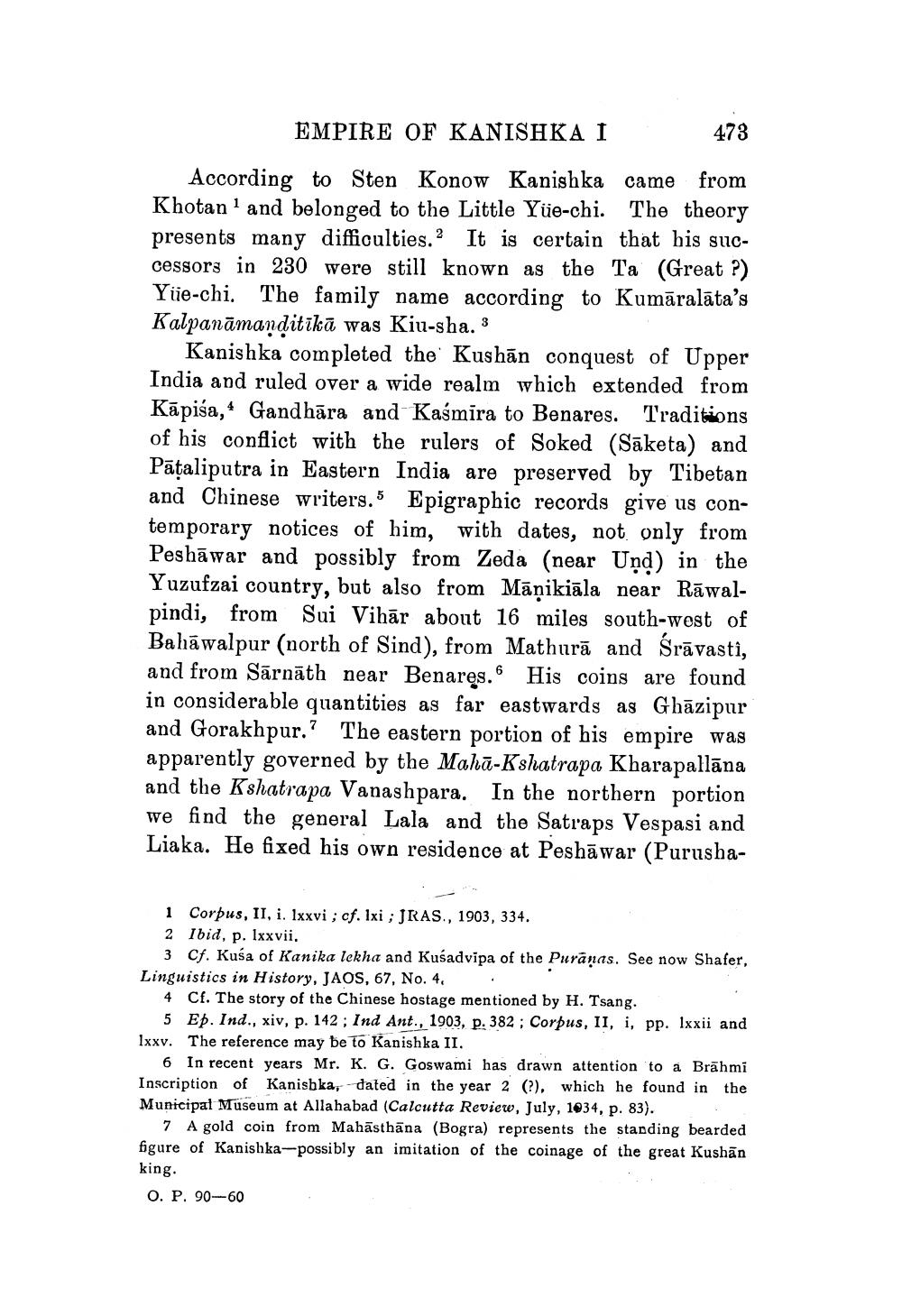________________
EMPIRE OF KANISHKA I
473
According to Sten Konow Kanishka came from Khotan and belonged to the Little Yüe-chi. The theory presents many difficulties. It is certain that his successors in 230 were still known as the Ta (Great ?) Yije-chi. The family name according to Kumāralāta's Kalpanāmanditīkā was Kiu-sha. 3
Kanishka completed the Kushān conquest of Upper India and ruled over a wide realm which extended from Kāpiša, * Gandhāra and Kaśmira to Benares. Traditions of his conflict with the rulers of Soked (Sāketa) and Pataliputra in Eastern India are preserved by Tibetan and Chinese writers.5 Epigraphic records give us contemporary notices of him, with dates, not only from Peshāwar and possibly from Zeda (near Uņd) in the Yuzufzai country, but also from Māņikiāla near Rāwalpindi, from Sui Vihār about 16 miles south-west of Bahāwalpur (north of Sind), from Mathurā and Śrāvasti, and from Sārnāth near Benares. His coins are found in considerable quantities as far eastwards as Ghāzipur and Gorakhpur.? The eastern portion of his empire was apparently governed by the Mahā-Kshatrapa Kharapallāna and the Kshatrapa Vanashpara. In the northern portion we find the general Lala and the Satraps Vespasi and Liaka. He fixed his own residence at Peshāwar (Purusha
1 Corpus, II, i. lxxvi; cf. lxi ; JRAS., 1903, 334. 2 Ibid, p. lxxvii.
3 Cf. Kuśa of Kanika lekha and Kušadvipa of the Puranas. See now Shafer, Linguistics in History, JAOS, 67, No. 4, .
4 Cf. The story of the Chinese hostage mentioned by H. Tsang.
5 Ep. Ind., xiv, p. 142 ; Ind Ant., 1903, p. 382 ; Corpus, II, i, pp. lxxii and Ixxv. The reference may be to Kanishka II.
6 In recent years Mr. K. G. Goswami has drawn attention to a Brähmi Inscription of Kanishka, dated in the year 2 (?), which he found in the Municipal Museum at Allahabad (Calcutta Review, July, 1934, p. 83).
7 A gold coin from Mahāsthāna (Bogra) represents the standing bearded figure of Kanishka-possibly an imitation of the coinage of the great Kushān king. O. P. 90-60




